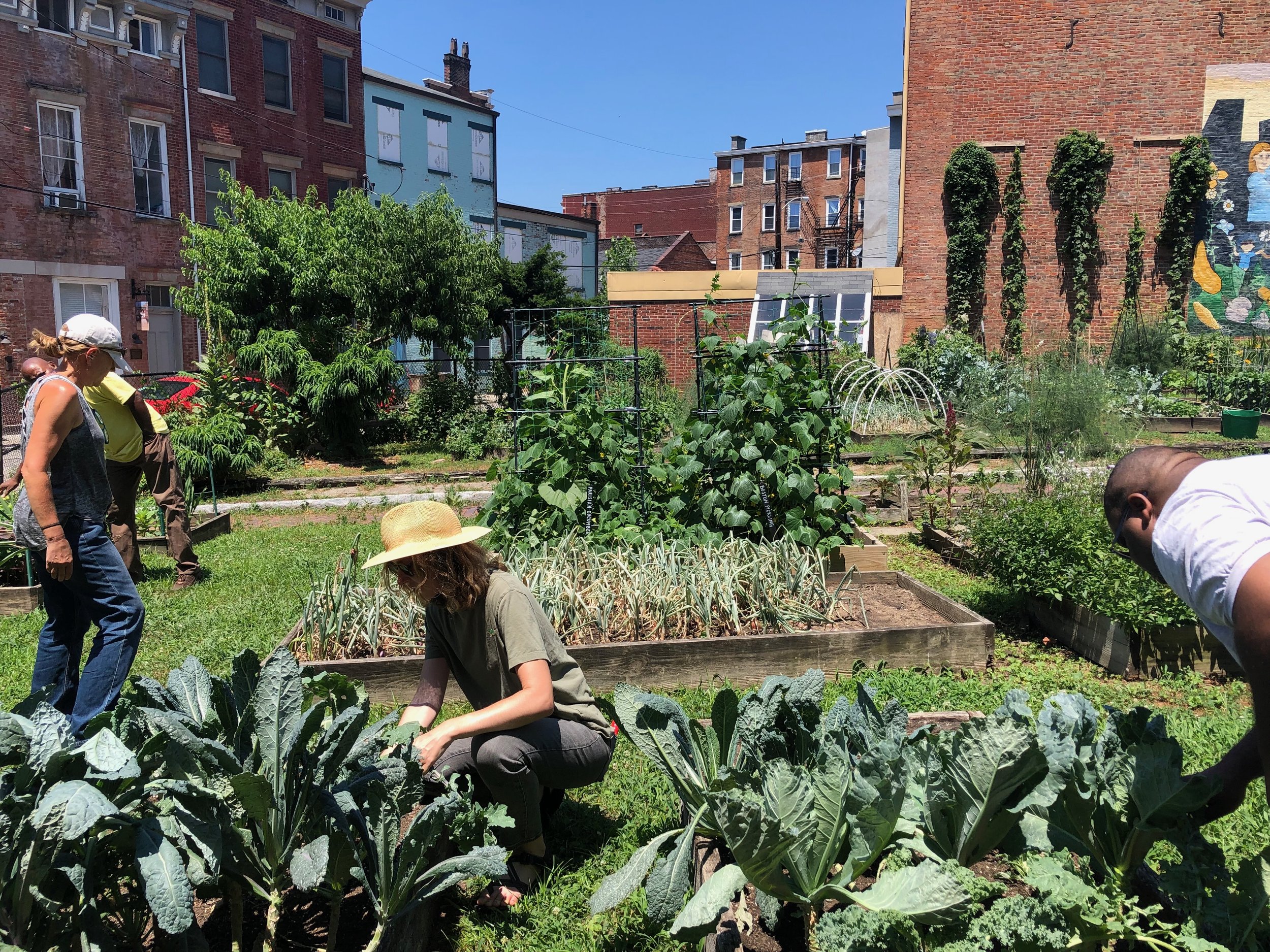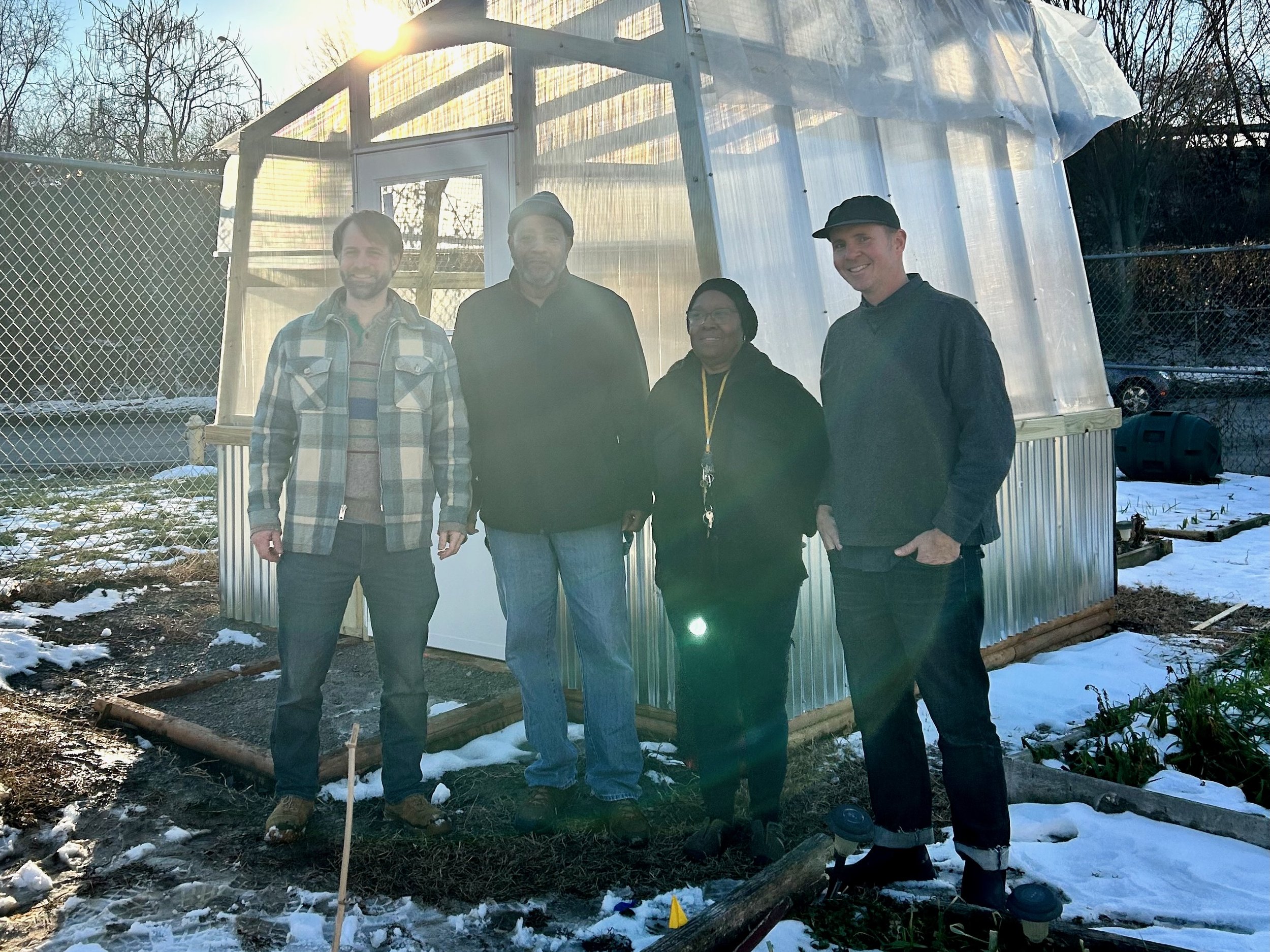Community Gardens: 2022 In Review
The Community Gardens Program at the Civic Garden Center (CGC) works with neighborhood residents to create community gardens, providing training and technical support for growing fruits and vegetables as well as nutrition education. We also aid in creating sustainable projects for the entire Cincinnati region and spaces where people can come together to tend to a garden, share a meal or tackle a project.
Community Gardens
The Community Garden Program’s focus for 2022 was to increase the availability of nutritious foods, reduce food miles and create a more sustainable food system for families in insecure communities. Throughout our network of community gardens, the past decade has seen a steady uptick in the demand for food. Providing the setting for people in these areas and beyond to participate and access local food fosters equity and inclusion.
Here are some highlights from our Community Gardens Program in 2022:
Continuing to build off of the unprecedented interest in local food generated by the pandemic, our network of over 70 community gardens added 4 new thriving gardens.
Over 3,ooo plants were grown at the CGC’s Green Learning Station and distributed during the spring, summer and fall to our community gardeners.
With the help of Deeper Roots Coffee, our West End Garden received a new greenhouse that will allow them to extend their growing season, grow new produce and expand crop possibilities.
In collaboration with Givaudan, our MLK Garden received a much-needed makeover to bring more local food to the thriving neighborhood of Avondale.
“Over the growing season, our gardeners and others who participated from all over enjoyed being taught how to plant and grow a successful garden.”
HUB Garden Education
The CGC’s sustainable gardening approach focuses on conserving natural resources and creating welcoming habitats for beneficial wildlife such as birds, butterflies and native pollinators. Within our network of over 70 community gardens are seven HUB Gardens where we offer our “in the garden” education.
In 2022, during the four-month growing season, we taught over 30 free classes for more than 230 participants. We also highlighted the difference between large grocery store produce and local produce at 15 garden-based culinary events, harvesting fresh produce and fruit to make delicious snacks and meals on the spot. We collaborated with facilitators from OSU Extension Office, MyWhy and the Culinary Director for CityLink Center to make these education events successful.
“The Civic Garden Center connected the dots for healthy eating. The cooking demos at the Taft Garden showed how to take freshly picked veggies and quickly turn them into delicious dishes.”
“The demonstrations taught me about how to watch my calorie intake, my carb intake, and the different aspects of what food can actually do positively and adversely to your body including but not limited to diabetes and other hereditary diseases that some foods target.”
Community Garden Development Training (CGDT)
CGDT is a free 11-week training that teaches participants how to create community gardens that are assets to their neighborhoods. In 2022, this integral part of our education programming had 32 participants, 21 of whom received their certificate of completion at the end of the course. Facilitators from Campbell County Extension Office, Waterfields, Hamilton County Soils and Water Conservation, Isaiah 55, Inc. and Citizens for Civic Renewal Strategies helped make the series a success.
Looking Ahead
In 2023, the CGC’s Community Gardens Program will become our Urban Agriculture Program as we increase our focus on food security. We’ll use our community gardens as integral components of neighborhood growth and continue our efforts to educate and support sustainable gardening. We’ll be offering our “in the garden” education opportunities for gardeners and community members again along with culinary and nutrition-focused events. And we’ll continue to seek partners that will help increase our sustainable efforts, long-term impact and community building in the greater Cincinnati area.



